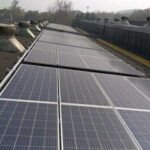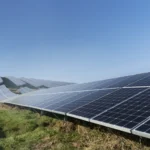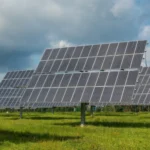Solar Projects Challenges in India: Module Supply Shortages and Policy Delays Slow Growth
Solar Projects Challenges in India: Module Supply Shortages and Policy Delays Slow Growth
A team of researchers from AVANCIS, a solar module manufacturer in Munich, Germany, has broken the 20% efficiency barrier for CIGS thin-film modules measuring 30 cm x 30 cm. The previous record, also set by AVANCIS, was 19.8%. The new efficiency of 20.3% was independently certified by the National Renewable Energy Lab.
The company’s researchers made essential improvements to the materials used in the solar panels, including optimizing a material called Ga-rich Cu (In, Ga) (S, Se)2 through a special chemical process. They also treated the material with sodium after it was deposited and used a special zinc-based buffer that did not contain cadmium.
The advancements in the manufacturing process can be applied to AVANCIS’ ongoing product series, which means they can make more solar panels with these improvements. The company said these large solar panels give architects much freedom to design solar facades. Its color technology allows the panels to have dynamic colors, creating an interplay of light and color in architectural designs.
In March, Midsummer, a Swedish developer, in collaboration with researchers at the University of California, Los Angeles, developed a four-terminal perovskite-CIGS tandem solar cell that has demonstrated an efficiency of 24.9%. This is the highest efficiency ever achieved for a CIGS solar cell.
The development of more efficient CIGS solar cells is a major step forward for the solar industry. CIGS solar cells are thin, flexible, and lightweight, making them ideal for a variety of applications, including building-integrated photovoltaics (BIPV) and rooftop solar systems. The higher efficiency of these new cells will make them more cost-competitive with other types of solar cells, such as crystalline silicon cells. This could help to accelerate the adoption of solar energy and contribute to a cleaner, more sustainable future.
Suggested Articles

Complete Guide to Rooftop Solar Components for Industries
A rooftop solar system for factories typically includes solar panels, inverters, mounting structures, wiring, and monitoring systems. Additional components like net meters and energy storage may also be installed to optimize energy usage and track performance

Delhi charges one of the highest tariffs for commercial load and industrial – average over Rs 10.00 per kWh
Delhi imposes some of the highest electricity tariffs for commercial and industrial consumers, averaging over ₹10 per kWh, impacting businesses and operating costs

Is Your Solar PV Rooftop System Safe & Protected?
Worried about the safety of your solar rooftop system? Explore key tips, maintenance practices, and protection strategies to keep your Solar PV system secure and efficient

The Rise of Clean Energy: Solar Energy Trends in 2023
The solar energy industry is on the rise, as the demand for clean and renewable energy sources continues to increase. 2023 is shaping up to be a big year for the solar energy sector, as new technologies and innovations are expected to drive growth and expand the reach of solar energy.

Financing made easy for the Rooftop Solar Projects
Switching to solar is easier than ever with flexible financing options. This guide explains how to fund your rooftop solar project through loans, subsidies, and government schemes to make clean energy more affordable and sustainable.

Latest MNRE List: Approved Solar Module Manufacturers
Check the latest MNRE-approved list of solar module manufacturers to ensure quality and compliance for your solar projects in India.

New Loan Scheme for solar rooftop projects by IREDA
IREDA has introduced a new loan scheme to make rooftop solar projects more accessible. This guide covers eligibility criteria, benefits, application process, and how businesses and homeowners can leverage this scheme to invest in clean and affordable solar energy.

Agrovoltaics Innovation: Boosting Solar Energy While Supporting Farming
Explore agrovoltaics innovation: how combining solar energy with farming boosts efficiency, supports agriculture, and maximizes land use.